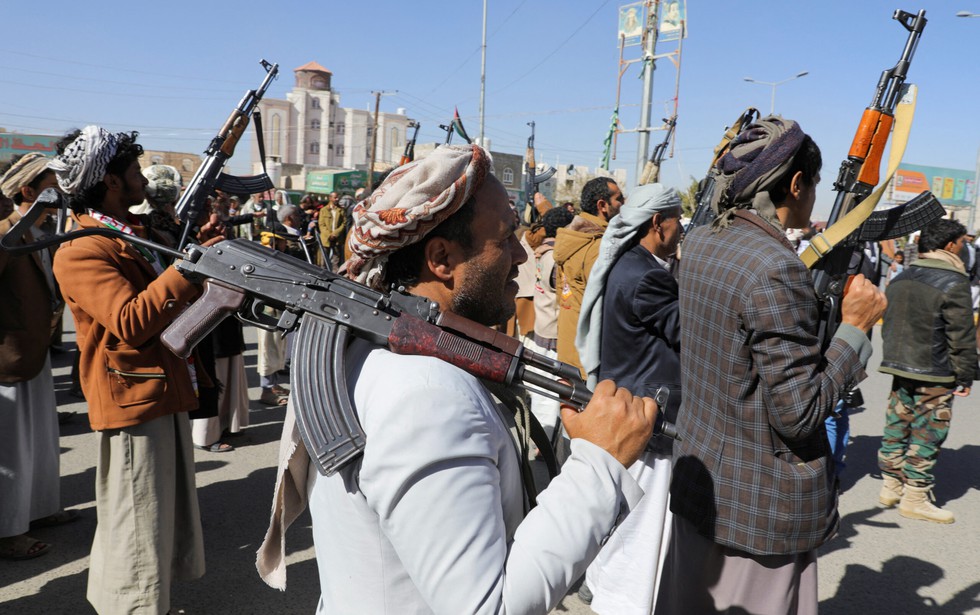On Sunday, Yemen’s Houthi rebels launched a ballistic missile that struck near Tel Aviv, Israel’s bustling commercial hub. Houthi leader Abdul Malik al-Houthi claimed responsibility, asserting that the missile breached Israel’s advanced air defense systems. Fortunately, there were no casualties, but the attack heightened already fragile regional tensions, especially as the Gaza war nears its first anniversary since Hamas’s attack on October 7.
Israeli Response
Israeli Prime Minister Benjamin Netanyahu quickly condemned the attack, warning that the Iran-backed Houthis would “pay a heavy price” for their actions. The missile strike caused minor damage, such as shattered glass at a train station and injuries to several civilians seeking shelter. This incident marks another escalation involving the Houthis, who are increasingly involved in the Gaza conflict, linked to a broader coalition of militias known as Iran’s Axis of Resistance.
Origins of Houthi Missile Capability
The Houthis’ ability to launch long-range missile strikes raises questions about how a militia in war-torn Yemen obtained such capabilities. The group, officially called Ansar Allah, evolved from a grassroots movement in the 1990s into a well-armed militia. Since the Yemeni civil war began in 2015, they have relied on three main sources to enhance their missile arsenal:
- Historical Weapons Cache: Yemen’s historical divisions during the Cold War led to military aid from various superpowers, including the acquisition of Scud missiles from the Soviet Union in the 1970s.
- Looting and Conflict: The Houthis have accessed outdated missile systems by looting government armories during the 2004-2010 conflicts and further enhanced their capabilities following their alliance with former Yemeni President Ali Abdullah Saleh in 2015.
- Iranian Support: The Houthis have received substantial support from Iran, including missile components and tactical training. U.S. and coalition forces have intercepted multiple Iranian shipments to Yemen, further indicating this support.
Iran’s Strategic Role
Iran’s influence is significant in the Houthi missile program, providing various missile types such as the Burkan series and Quds-1 cruise missiles. Smuggling routes through Oman and the Arabian Sea facilitate the transfer of missile components into Yemen, allowing the Houthis to assemble missiles locally.
Accidental Arms Supply
The Saudi-led coalition, aimed at supporting Yemen’s internationally recognized government, has unintentionally supplied the Houthis with weaponry through accidents and losses. This has included the seizure of advanced weapons from Saudi forces, though Iranian aid remains the primary source of Houthi armaments.
Broader Implications
The Houthis are part of a network of Iranian-backed militias, including Hezbollah and various factions in Iraq. This relationship allows Iran to extend its influence and project power across the Arabian Peninsula. By supporting the Houthis, Iran aims to challenge U.S. and Saudi dominance in the region, especially over strategic maritime routes like the Bab-el-Mandeb Strait.
Multiple Choice Questions (MCQs):
- What did the Houthi rebels launch that struck near Tel Aviv?
- A) A drone
- B) A ballistic missile
- C) A submarine
- D) A satellite
- Who claimed responsibility for the missile strike on Tel Aviv?
- A) Benjamin Netanyahu
- B) Abdul Malik al-Houthi
- C) Ali Abdullah Saleh
- D) Iranian officials
- What was the primary source of the Houthis’ missile capabilities?
- A) Local manufacturing
- B) Historical weapons caches, Iranian support, and arms trafficking
- C) International aid
- D) Peace treaties
- Which missile type has Iran reportedly provided to the Houthis?
- A) Patriot missile
- B) Burkan series
- C) Tomahawk missile
- D) Scud missile
- What strategic advantage does Iran gain by supporting the Houthis?
- A) Control of the oil market
- B) Influence over maritime chokepoints like the Bab-el-Mandeb Strait
- C) Establishing peace in Yemen
- D) Strengthening U.S. ties in the region
